
Cult classic films occupy a unique space in the world of cinema. They are often unconventional, challenging, and ahead of their time, leading to varied receptions upon their initial release. However, over time, these films develop a dedicated following, and their influence grows, cementing their status as cult classics. Below is an exploration of some of the most iconic cult classics, how they were initially received, and the journey that led them to their revered status today.
1. “The Rocky Horror Picture Show” (1975)

Initial Reception:
When “The Rocky Horror Picture Show” was first released, it did not make a significant impact. The film was a commercial failure, with critics dismissing it as a bizarre and confusing musical. The unconventional mix of horror, comedy, and musical elements, along with its flamboyant characters, particularly Dr. Frank-N-Furter, did not resonate with the mainstream audience. Reviews were largely negative, with many not understanding the film’s parody of horror and science fiction tropes. Its box office performance was disappointing, and it seemed destined for obscurity.
Cult Status:
However, the film’s fortunes changed when it began to be shown as a midnight movie. Audiences began to embrace the film’s campy nature, outlandish characters, and catchy musical numbers. It became a participatory experience, with fans dressing up as characters, shouting responses to the screen, and performing along with the film. Over time, “The Rocky Horror Picture Show” became a cultural phenomenon, celebrated for its subversive themes, celebration of individuality, and defiance of conventional norms. It remains the longest-running theatrical release in film history and continues to be a symbol of counterculture.
2. “Fight Club” (1999)

Initial Reception:
“Fight Club” was met with a mixed reception upon its release. Directed by David Fincher and based on the novel by Chuck Palahniuk, the film was seen as controversial and polarising. While some critics praised its boldness and dark satire of consumerism and masculinity, others were disturbed by its violence and perceived glorification of toxic behaviour. The film’s ambiguous messaging left audiences and critics divided. Financially, “Fight Club” underperformed at the box office, earning $37 million domestically against a $63 million budget, leading to it being labelled a flop.
Cult Status:
Despite its initial lukewarm reception, “Fight Club” found a second life through DVD sales and word of mouth. Its complex themes, stylish direction, and Brad Pitt’s iconic performance as Tyler Durden resonated with younger audiences, particularly those disillusioned with modern society. The film’s critique of consumer culture and exploration of identity became increasingly relevant, and it began to be re-evaluated as a misunderstood masterpiece. “Fight Club” is now regarded as one of the defining films of the 1990s and a quintessential cult classic.
3. “Donnie Darko” (2001)
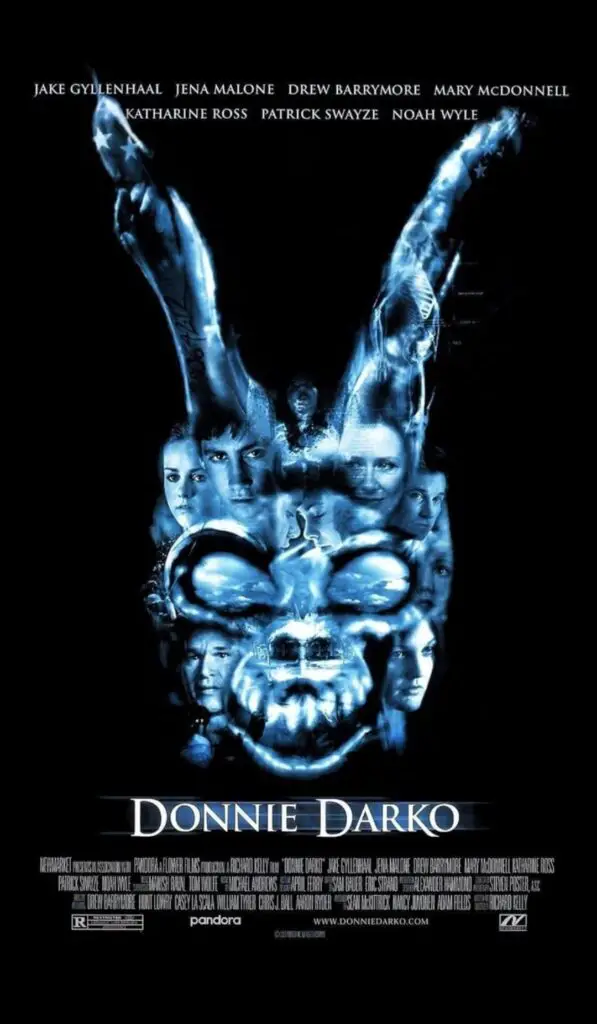
Initial Reception:
“Donnie Darko,” directed by Richard Kelly, had a troubled release. The film’s dark tone and complex narrative, involving time travel, mental illness, and existential angst, made it a difficult sell to audiences. Released shortly after the 9/11 attacks, its marketing was minimal, and it struggled to find an audience. The film grossed less than $7.5 million worldwide, well below its $4.5 million budget. Critics were divided, with some appreciating its ambition and originality, while others found it confusing and incoherent.
Cult Status:
“Donnie Darko” gained traction through midnight screenings and home video, where its intricate plot and surreal atmosphere began to be appreciated by a niche audience. The film’s themes of adolescence, fate, and the nature of reality resonated with viewers, particularly those in their teens and early twenties. Jake Gyllenhaal’s performance as the troubled titular character became iconic, and the film’s soundtrack, featuring tracks by Echo & the Bunnymen and Tears for Fears, added to its appeal. Over time, “Donnie Darko” became a cult sensation, celebrated for its originality and emotional depth.
4. “The Big Lebowski” (1998)
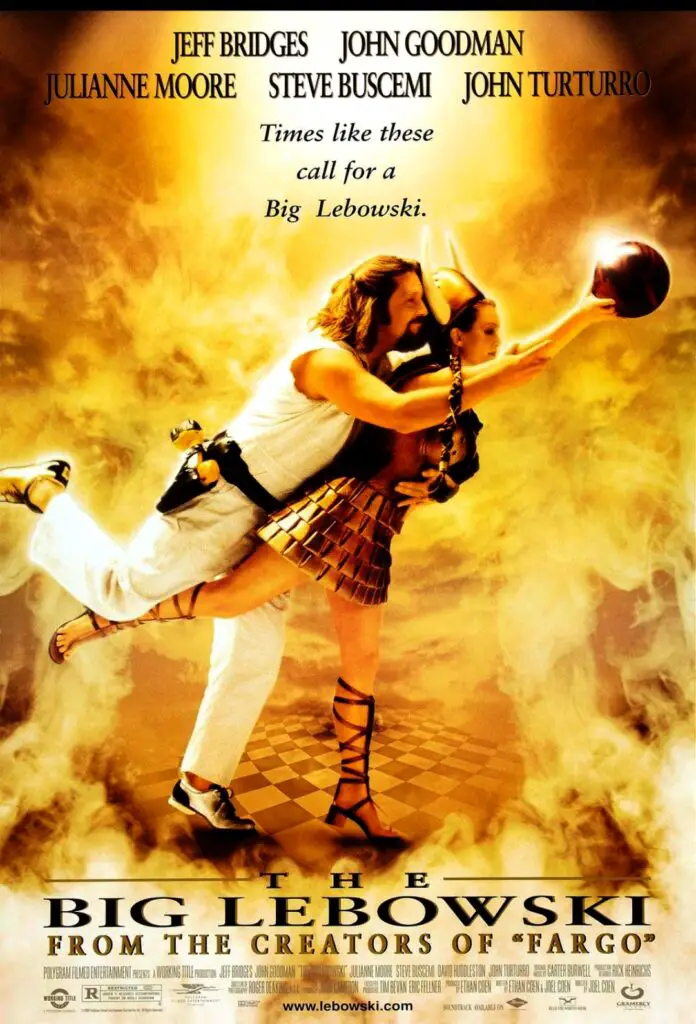
Initial Reception:
“The Big Lebowski,” directed by the Coen Brothers, was not an immediate success. The film’s offbeat humour, meandering plot, and eccentric characters puzzled audiences and critics alike. While some appreciated its quirky charm, others dismissed it as aimless and confusing. At the box office, “The Big Lebowski” underperformed, earning only $17 million domestically against a $15 million budget. It seemed to be a minor entry in the Coen Brothers’ filmography.
Cult Status:
However, the film’s unique style, memorable dialogue, and Jeff Bridges’ iconic portrayal of “The Dude” began to attract a devoted following. “The Big Lebowski” became a cultural touchstone, inspiring fan conventions (Lebowski Fests), merchandise, and even a religion known as Dudeism. The film’s absurd humor, philosophical undertones, and celebration of a laid-back lifestyle resonated with audiences, particularly those who embraced its irreverent spirit. Today, “The Big Lebowski” is considered one of the Coen Brothers’ most beloved films and a quintessential cult classic.
5. “Blade Runner” (1982)
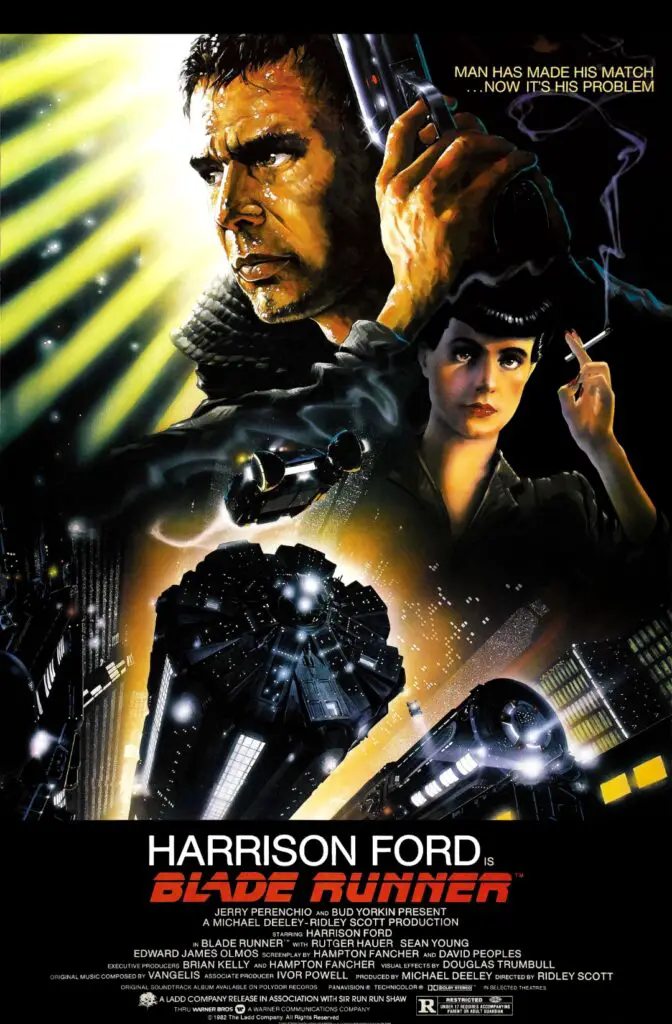
Initial Reception:
Ridley Scott’s “Blade Runner” was not an immediate hit. Released in 1982, the film was a commercial disappointment, grossing $27.5 million against a $30 million budget. Critics were divided, with some praising its groundbreaking visuals and atmospheric world-building, while others found its pacing slow and its story muddled. The film’s philosophical themes, involving artificial intelligence and what it means to be human, were not widely appreciated at the time. Additionally, the studio-imposed changes, including a voiceover and a more optimistic ending, were criticised by both audiences and Scott.
Cult Status:
“Blade Runner” found its audience over time, particularly after the release of multiple versions, including the Director’s Cut in 1992 and The Final Cut in 2007. These versions restored Scott’s original vision, removing the voiceover and ambiguous ending. The film’s stunning visual design, heavily influenced by film noir and cyberpunk aesthetics, became highly influential. Its themes of identity, memory, and humanity resonated deeply with audiences, particularly in the context of the rise of technology. “Blade Runner” is now hailed as one of the greatest science fiction films of all time and a landmark in cinematic history.
6. “Pulp Fiction” (1994)
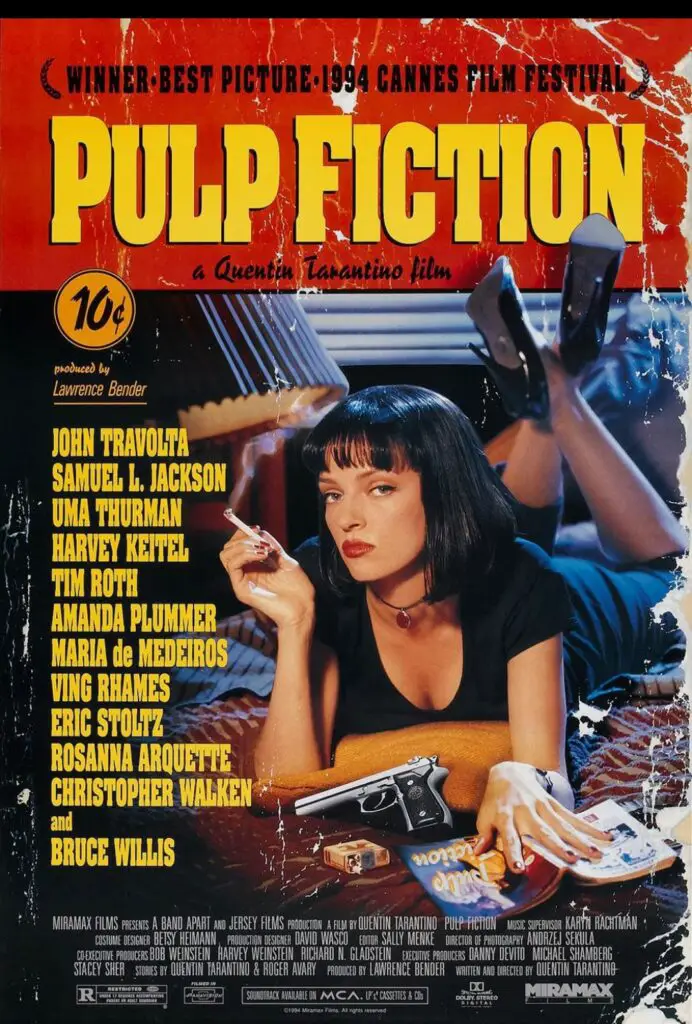
Initial Reception:
“Pulp Fiction,” directed by Quentin Tarantino, was a critical and commercial success upon its release. It won the Palme d’Or at the Cannes Film Festival and grossed over $200 million worldwide. Critics praised its sharp dialogue, non-linear narrative, and eclectic soundtrack. The film’s blend of humour, violence, and pop culture references was groundbreaking and set a new standard for independent cinema. However, despite its success, some mainstream audiences were put off by its graphic violence and unconventional storytelling.
Cult Status:
“Pulp Fiction” quickly became a cultural phenomenon, influencing countless filmmakers and spawning numerous imitators. Its impact on popular culture was immense, with lines of dialogue, scenes, and characters becoming iconic. The film’s structure, which eschewed traditional narrative conventions, and its homage to various genres and films, resonated with cinephiles and casual audiences alike. Over time, “Pulp Fiction” has solidified its status as one of the most important films of the 1990s and a defining work of postmodern cinema.
7. “A Clockwork Orange” (1971)
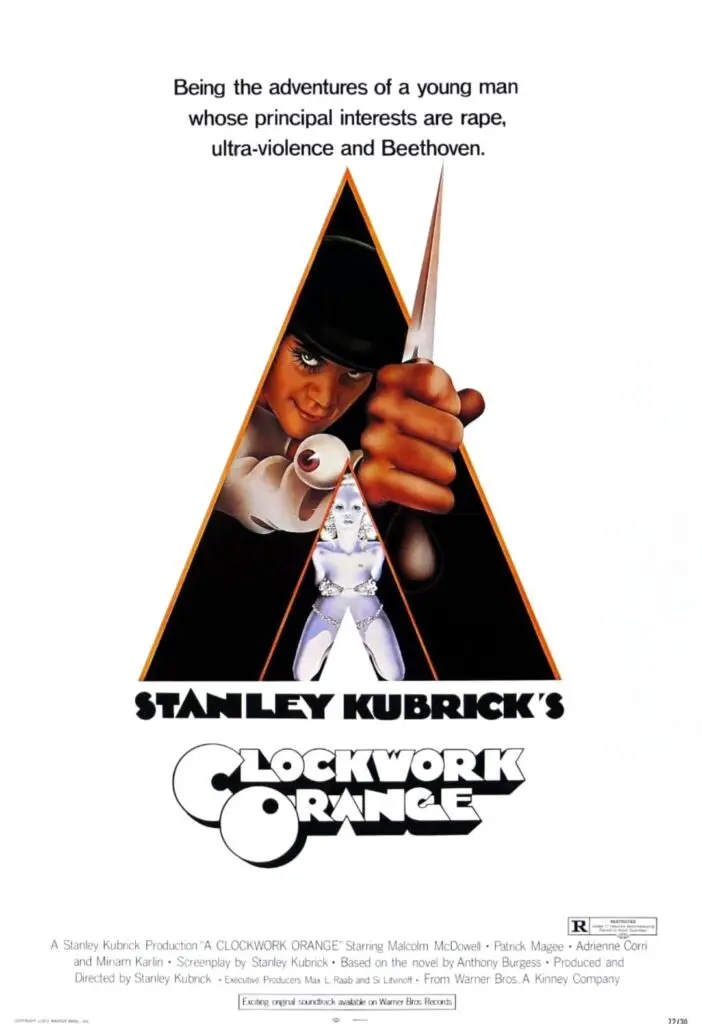
Initial Reception:
Stanley Kubrick’s “A Clockwork Orange” was highly controversial upon its release. The film’s graphic depictions of violence and its exploration of free will and authoritarianism shocked audiences and critics. While some praised its boldness and technical brilliance, others condemned it as morally repugnant. In the UK, the film was withdrawn from circulation by Kubrick himself after reports of copycat violence, further adding to its notoriety. Despite this, the film was a commercial success, particularly in the United States.
Cult Status:
Over time, “A Clockwork Orange” became a cult classic, admired for its stylistic innovation, thought-provoking themes, and Malcolm McDowell’s iconic performance as the charismatic yet sociopathic Alex. The film’s use of classical music, its striking visual design, and its exploration of the darker aspects of human nature have made it a subject of ongoing analysis and debate. “A Clockwork Orange” is now considered one of Kubrick’s most important works and a seminal film in the history of cinema.
8. “Brazil” (1985)

Initial Reception:
“Brazil,” directed by Terry Gilliam, had a troubled release due to conflicts between Gilliam and the studio over its dark and dystopian tone. The studio wanted a more optimistic ending, while Gilliam insisted on his original, bleak vision. The resulting battle delayed the film’s release in the United States, and when it was finally released, it received a limited theatrical run. Critics were divided, with some praising its imaginative visuals and satirical take on bureaucracy and authoritarianism, while others found it confusing and overly ambitious.
Cult Status:
Despite its initial struggles, “Brazil” has been embraced as a cult classic. Its surreal and dystopian vision of the future, heavily influenced by the works of George Orwell and Franz Kafka, has resonated with audiences, particularly those disillusioned with modern society. The film’s dark humour, striking visual style, and complex narrative have made it a favourite among cinephiles. “Brazil” is now regarded as one of Gilliam’s best films and a key work of science fiction and dystopian cinema. The film’s influence can be seen in various media, and its portrayal of a world dominated by an oppressive bureaucracy has continued to resonate with audiences, especially in the context of modern-day concerns about government overreach and the dehumanising effects of technology.
9. “Scarface” (1983)
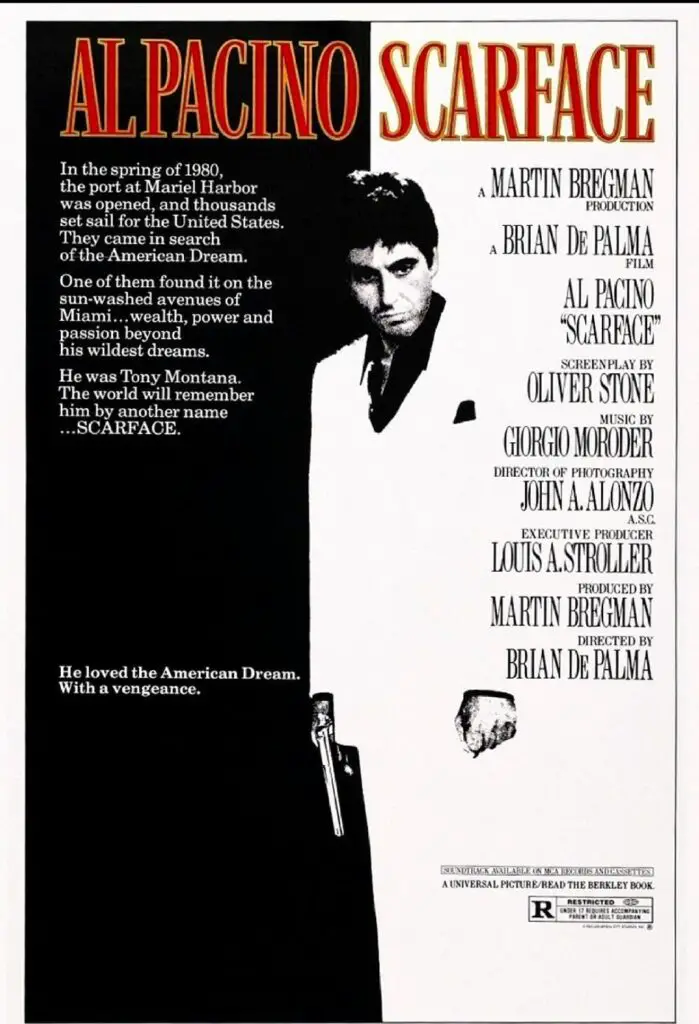
Initial Reception:
Directed by Brian De Palma and written by Oliver Stone, “Scarface” was initially met with mixed reviews. Critics were divided on the film’s excessive violence, foul language, and portrayal of the American Dream through the lens of Tony Montana, a Cuban immigrant who rises to power in the drug trade. While some praised Al Pacino’s performance as the ruthless and charismatic Montana, others found the film’s portrayal of violence gratuitous and its message problematic. Despite the critical ambivalence, “Scarface” performed reasonably well at the box office, though it was not considered a major success.
Cult Status:
Over time, “Scarface” became a cultural touchstone, particularly within hip-hop culture, where its themes of ambition, power, and excess found a receptive audience. The film’s iconic lines, such as “Say hello to my little friend!” and its depiction of the rise and fall of a crime lord, became ingrained in popular culture. Its influence extended beyond cinema, impacting music, fashion, and even video games. “Scarface” is now considered one of the defining gangster films of the 1980s and a quintessential example of how a film can transcend its initial reception to become a cult classic.
10. “Waterworld” (1995)

Initial Reception:
“Waterworld,” directed by Kevin Reynolds and starring Kevin Costner, was one of the most expensive films ever made at the time of its release, with a budget of around $175 million. Expectations were high, but the film was met with a lukewarm reception. Critics were unimpressed by its storyline and character development, while audiences were put off by its perceived overindulgence and lack of depth. “Waterworld” was initially labelled a box office bomb, grossing $88 million domestically, although it performed better internationally.
Cult Status:
Despite its rough start, “Waterworld” gained a following over the years, particularly through television broadcasts and home video releases. Its post-apocalyptic setting, where Earth is submerged in water and humans live on makeshift floating communities, became a point of fascination for fans of the genre. The film’s production history, fraught with difficulties and budget overruns, also added to its mystique. Today, “Waterworld” is appreciated as a unique, albeit flawed, epic adventure, and its ambitious vision has earned it a place as a cult classic.
11. “Akira” (1988)
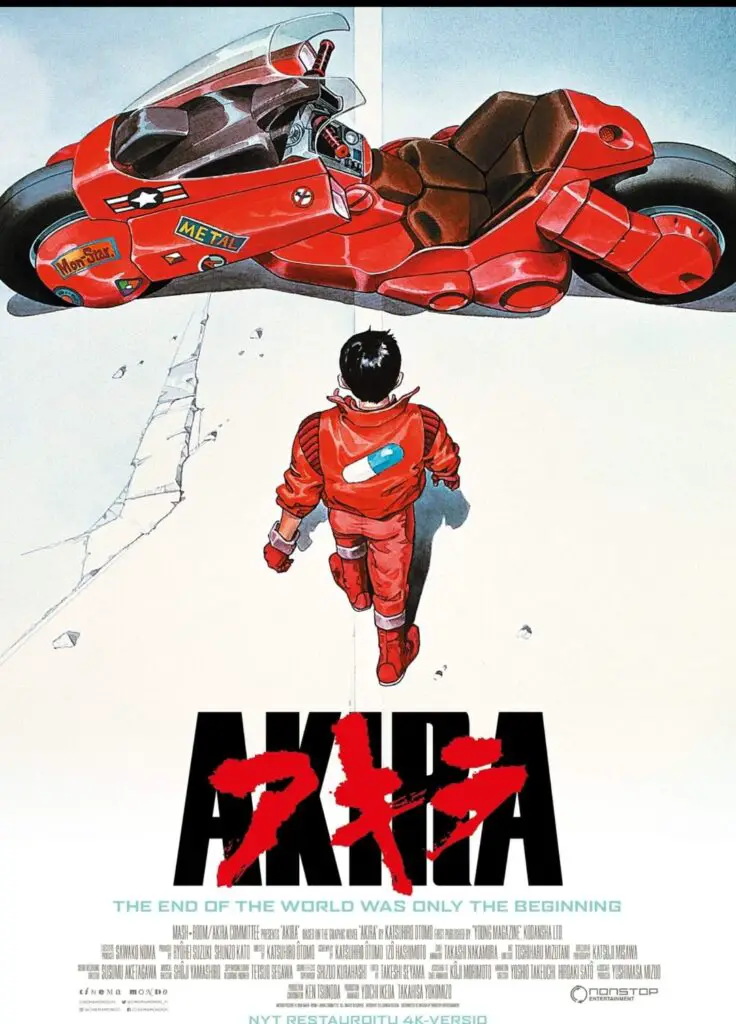
Initial Reception:
“Akira,” directed by Katsuhiro Otomo and based on his manga of the same name, was a groundbreaking achievement in animation, particularly in the West. When it was released, it was met with critical acclaim in Japan but had a more limited initial impact internationally. Many Western audiences were unfamiliar with anime, and “Akira’s” complex narrative, set in a dystopian future Tokyo and involving psychic powers and government conspiracies, was challenging for newcomers to the genre. The film did not achieve significant commercial success upon its initial release in the United States.
Cult Status:
“Akira” gradually built a cult following as it was discovered by audiences through VHS, DVD, and later, streaming platforms. It became one of the most influential anime films of all time, credited with popularising the genre in the West and inspiring countless filmmakers, animators, and artists. The film’s stunning visuals, intense action sequences, and deep philosophical themes have made it a touchstone for fans of both science fiction and animation. “Akira” is now regarded as a masterpiece of the genre and a seminal work that helped bridge the gap between Eastern and Western animation.
Conclusion
The journey of these films from initial release to cult status highlights the often unpredictable nature of cinema. Many of these movies were initially misunderstood or underappreciated, only to find their audience years later, often through home video, midnight screenings, or word of mouth. Their appeal lies in their ability to challenge conventional storytelling, explore complex themes, and connect with audiences on a deeper level. These films often reflect the cultural and societal anxieties of their time, resonating with viewers who see in them a reflection of their own experiences or values. As a result, they have become more than just movies; they are cultural artefacts that continue to inspire and influence new generations. The term “cult classic” is not just a label for films with a dedicated fanbase; it’s a testament to the enduring power of cinema to provoke, challenge, and ultimately, unite audiences across time and space.